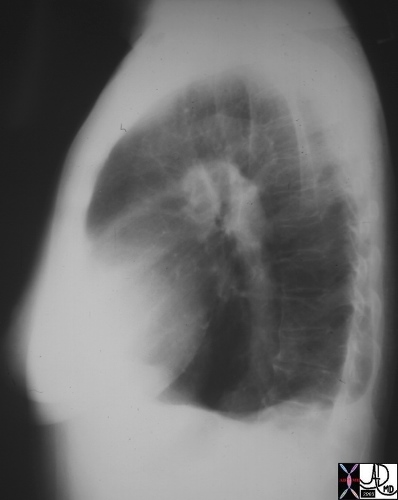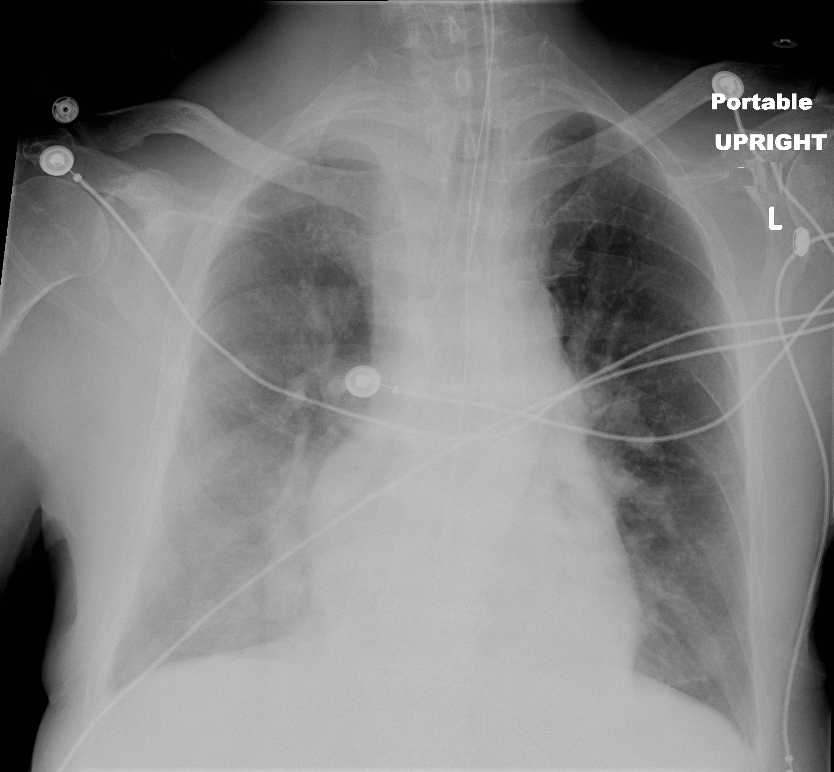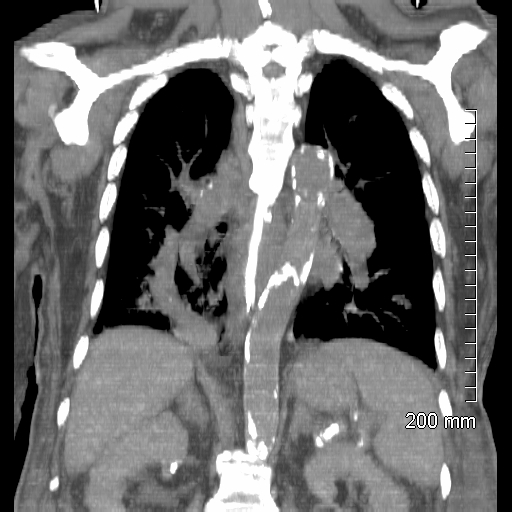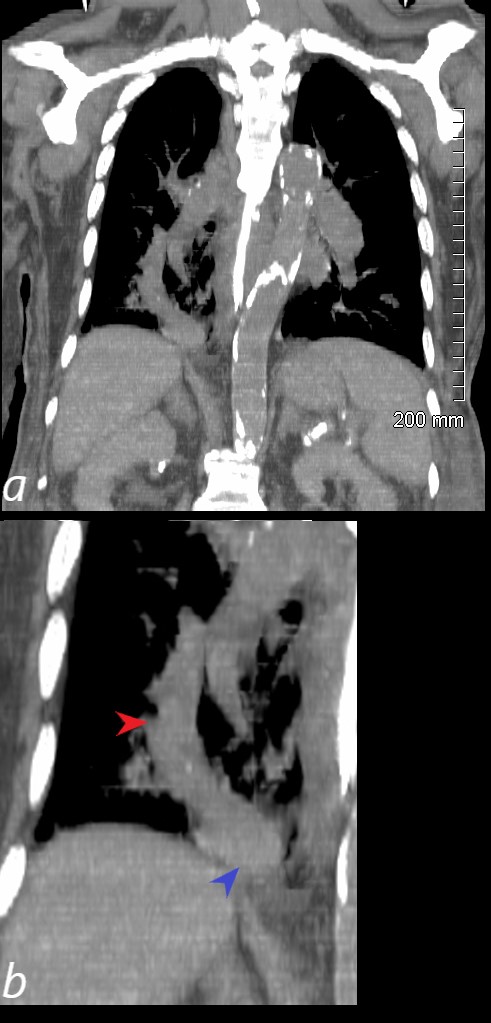Scimitar syndrome
hypoplasia / aplasia of one or more lobes of lung
always on RIGHT
+/- partial APVR (to IVC, portal vein, hepatic vein.)
scimitar-shaped density is draining vein

| Scimitar Syndrome |
| 01713b01 heart cardiac lung IVC inferior vena cava venous drainage pulmonary vein fx scimitar sign patrial anomalous venous return to IVC hypoplastic right lung dx congenital pulmonary venolobar syndrome CXR plain film chest Courtesy Ashley Davidoff MD |

| Scimitar Syndrome |
| 01714 heart cardiac lung IVC inferior vena cava venous drainage pulmonary vein fx scimitar sign patrial anomalous venous return to IVC hypoplastic right lung dx congenital pulmonary venolobar syndrome CXR plain film chest Courtesy Ashley Davidoff MD |
Scimitar Sign and Unilateral Pulmonary Edema CXR
66 year old female presents with dyspnea

66 year old female presents with dyspnea
Frontal CXR shows unilateral right sided pulmonary edema with cephalization of the left upper lung vessels, with evidence of left atrial enlargement, and enlaged main paulmonary artery suggesting pulmonary hypertension secondary to longstanding left to right shunt. In addition there is a curvilinear structure along the right heart border that is shaped like a sword or a scimitar and the right lung appears smaller than the left. These findings are consistent with scimitar sign and scimitar syndrome
The large shunt results in in increased flow to the right lung and therefore accounts for the unilateral edema
Courtesy Ashley Davidoff MD The CommonVein.net 127H 82595.8
Scimitar Sign on CT

66 year old female presents with dyspnea
Coronal CT shows a curvilinear sword shaped structure in the right lower lung field that represents the right lower pulmonary vein that is draining anomalously into the inferior vena cava.
The pulmonary arteries are enlarged reflecting pulmonary hypertension secondary to longstanding left to right shunt
Findings are consistent with partial anomalous pulmonary venous return and the sword like shape of the vein has been assigned the name scimitar syndrome The PAPVR is often associated with hypoplasia of the lung on the affected side.
Courtesy Ashley Davidoff MD The CommonVein.net 127H 82604

66 year old female presents with dyspnea
Coronal CT shows a curvilinear sword shaped structure in the right lower lung field that represents the right lower pulmonary vein (red arrowhead, b) that is draining anomalously into the inferior vena cava(blue arrowhead b).
The pulmonary arteries are enlarged reflecting pulmonary hypertension secondary to longstanding left to right shunt
Findings are consistent with partial anomalous pulmonary venous return and the sword like shape of the vein has been assigned the name scimitar syndrome The PAPVR is often associated with hypoplasia of the lung on the affected side.
Courtesy Ashley Davidoff MD The CommonVein.net 127H 82604cL
